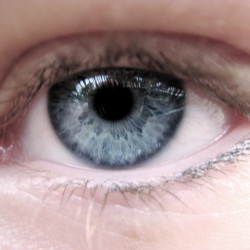
These prototype brain interface glasses cost just 65 dollars to produce, but could be priceless for thousands of disabled people around the world. In combination with inexpensive video cameras, the glasses allow users to operate a computer with their eyes, controlling a cursor on a screen just like a conventional computer mouse.
Soundbite (English) Will Abbot, PhD student, saying: ”Now I’m controlling the mouse directly with my eyes.”
The glasses were created from off-the-shelf materials by PhD student William Abbott and his lecturer Dr Aldo Faisal.
Soundbite (English) Dr Aldo Faisal, Lecturer in Neurotechnology at Imperial College, saying: ”This system consists of basically two things. One is a device, a piece of hardware which is basically an eye tracking system that William is wearing here on his head. This basically consists of two sets of very fast cameras that record the movements of the eyes and enable us to work out where on the screen William is looking. And the other part of the script is smart software that basically decodes the intentions that William has about interacting with the computer and translates them into commands that enable them to control the computer just by using his eyes.”
The computer is calibrated to ignore involuntary blinking.
Soundbite (English) Dr Aldo Faisal, Lecturer in Neurotechnology at Imperial College, saying: ”Blinks are not an issue for our system because blinks occur naturally and we want people to behave naturally when they use our system. That’s why all the commands that you issue are done by something that you voluntarily control, namely the wink. For example, in the case of the computer user interface user that we developed you simply look on the screen, the mouse pointer follows wherever you’re looking on the screen, and if you want to interact with an icon or start an application you just wink to click.”
The duo say millions of people suffering from Multiple Sclerosis, Parkinson’s, muscular dystrophy, spinal cord injuries or amputees could benefit. They say the technology is much less expensive – and less invasive – than other thought or eye-control devices developed elsewhere. It employs an algorithm that works out the 3D gaze of the subjects – in other words, how far into the distance they’re looking.
Soundbite (English) Will Abbot, PhD student, saying: ”We take this natural eye movement signal because we look where we want to click or we look where we’re going and this means it’s a very natural, intuitive way for people to control disability devices or interact with a computer and we can demonstrate this with real-time control of the classic arcade game ‘Pong’.”
